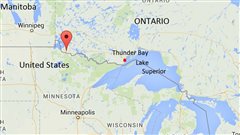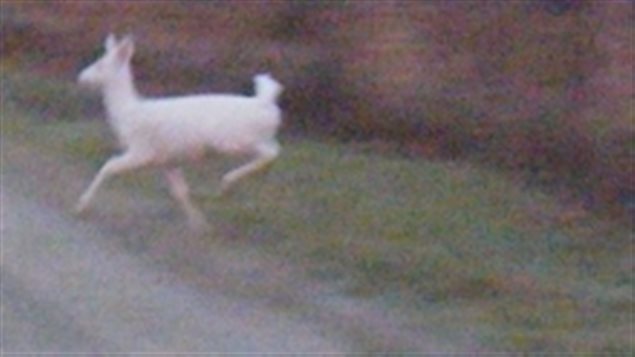People around the small town of Stratton Ontario had been seeing something very rare during the summer, an all-white deer.
Stratton is located about 400 kilometres west of the northern Ontario city of Thunder Bay.

Jo Ann Brown’s family farm is nearby and she had been on the lookout for the rare deer. While driving, she spotted it in a field with about nine other deer. Several in the group had crossed the road in front of her, so she prepared her camera known the rest of the group would follow and sure enough she was ready when it crossed.
Neither she nor her husband had ever seen a white deer before.
Deer hunting season has just opened in the area and one could hope no one takes this rare animal.
White deer are no unheard of, and they are usually not albinos. Indeed a small herd of white deer developed on a large US army base in New York state where inbreeding over decades propagated the genetic trait.
White tail deer are so called because when frightened their tails are raised clearly showing the white underside on their otherwise mostly brown body. They, like many other animals have a recessive gene causing “leucism”. This is a condition which results in an absence of pigment producing cells, leaving their fur coats white instead of the usual medium brown.
The particular gene causing leucism is however rare in deer, and a fawn would need to get two of the genes, one from each parent, to result in the white coat. That is why white deer tend to be rare.
Last year hunters shot a rare white moose in Cape Breton Nova Scotia angering local aboriginals who consider white moose to be “spirit” animals, or semi-sacred and bad luck if you kill one. Unaware of the white moose’ significance, the hunters helped resolve the situation by giving the skin and meat to the local Mi’kmaq for a ceremonial restoration of the animal’s spirit and cleansing of the error.
On Canada’s west coast, rare white bears have the same “spirit” animal status among native groups.
with files from CBC







For reasons beyond our control, and for an undetermined period of time, our comment section is now closed. However, our social networks remain open to your contributions.